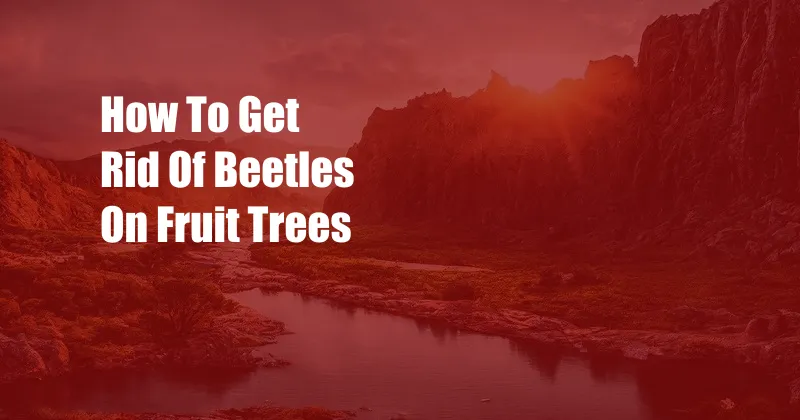
How to Get Rid of Beetles on Fruit Trees
Fruit trees are easily infested by beetles, resulting in damage to leaves and fruits. I lost a whole season’s harvest to these pests before I found effective ways to get rid of them. In this article, I’ll share my experience and provide comprehensive guidance on how to identify, manage, and prevent beetles from damaging your fruit trees.
Beetles are a diverse group of insects that can attack fruit trees. Some common types include Japanese beetles, codling moths, and plum curculios. These pests feed on leaves, fruits, and flowers, causing significant damage to the tree and its yield. Early detection and timely management are crucial to protect your fruit trees from beetle infestations.
Beetle Identification
Knowing how to identify beetles on fruit trees is the first step towards effective management. Japanese beetles are metallic green with copper-colored wing covers and measure about 1/2 inch in length. Codling moths are smaller, with a wingspan of about 1/2 inch, and have gray or brown forewings with a metallic sheen.
Plum curculios are brown or black beetles with a distinct curved snout. They are about 1/4 inch in length and have a humped appearance. These beetles can be identified by the crescent-shaped scars they leave on fruits, known as “stings.”
Management and Control
Once you’ve identified the type of beetles infesting your fruit trees, you can implement various management and control strategies. Cultural practices, such as removing fallen fruits and pruning infested branches, can help reduce beetle populations. Insecticides can also be used, but they should be applied according to label instructions and with consideration for the environment and beneficial insects.
Biological control is another effective approach to managing beetles on fruit trees. Introducing natural predators, such as ladybugs and lacewings, can help reduce beetle populations without the use of chemicals. Additionally, companion planting, where certain plants are grown alongside fruit trees to deter beetles, can be a sustainable pest management strategy.
Tips and Expert Advice
Here are some additional tips and expert advice for getting rid of beetles on fruit trees:
- Inspect your trees regularly: Early detection is crucial. Check your trees for signs of beetle infestation, such as holes in leaves, damaged fruits, or adult beetles.
- Use traps: Beetle traps can be effective in monitoring and controlling infestations. Place traps near trees or around the orchard to attract and catch beetles.
- Consider pheromone lures: Pheromone lures are specific to certain beetle species and can be used to attract and trap beetles into sticky traps.
- Encourage beneficial insects: Ladybugs, lacewings, and birds are natural predators of beetles. Encourage these beneficial insects by providing habitat and food sources.
FAQ
Q: What are the most common types of beetles that attack fruit trees?
A: Japanese beetles, codling moths, and plum curculios are some of the most common beetles that infest fruit trees.
Q: How can I identify codling moths?
A: Codling moths have gray or brown forewings with a metallic sheen and a wingspan of about 1/2 inch.
Q: Can beneficial insects help control beetles on fruit trees?
A: Yes, beneficial insects such as ladybugs and lacewings can help reduce beetle populations by feeding on them.
Conclusion
Beetles can be a significant threat to fruit trees, but with proper identification, management, and control measures, you can protect your trees and ensure a healthy harvest. By following the tips and advice outlined in this article, you can effectively get rid of beetles on fruit trees and enjoy the fruits of your labor.
Are you interested in learning more about pest management for fruit trees? Share your questions and insights in the comments below.